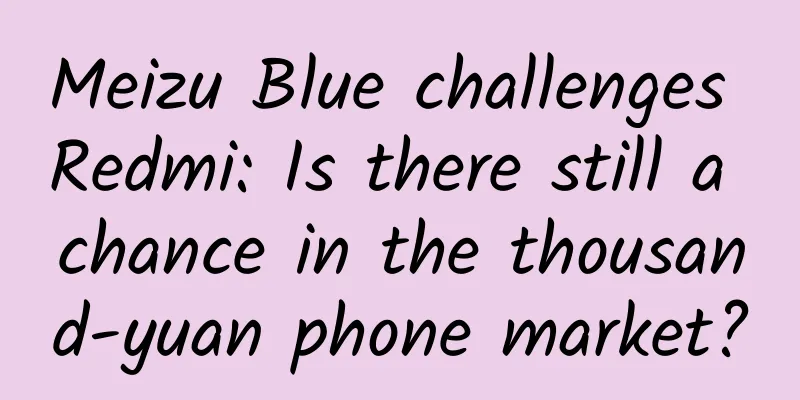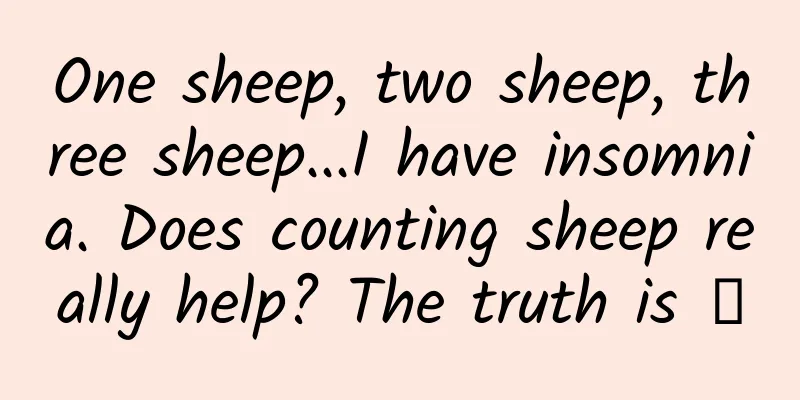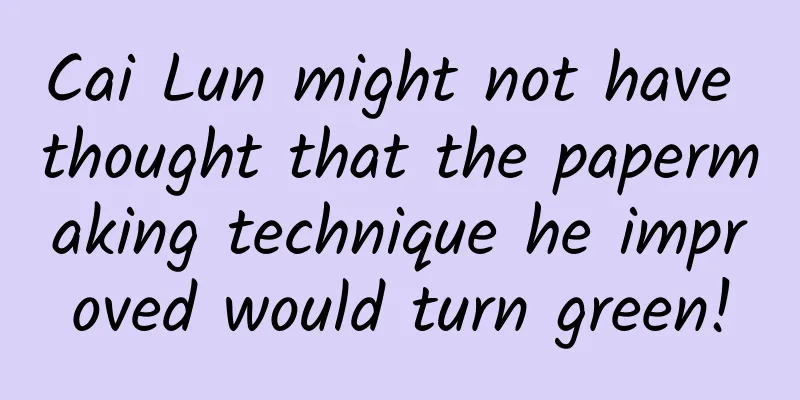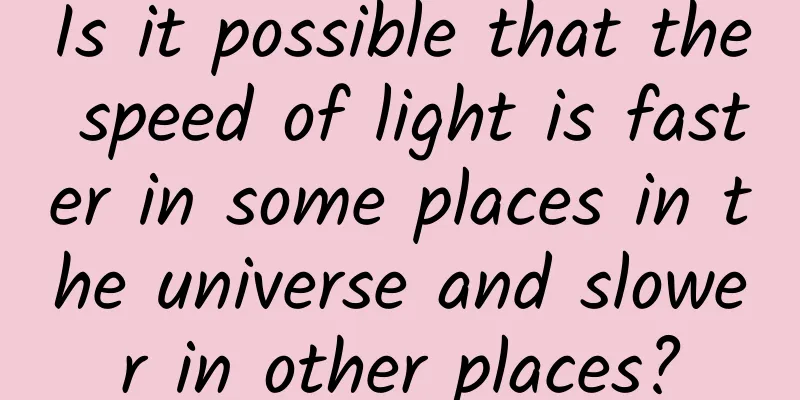What happens when your brain splits open?
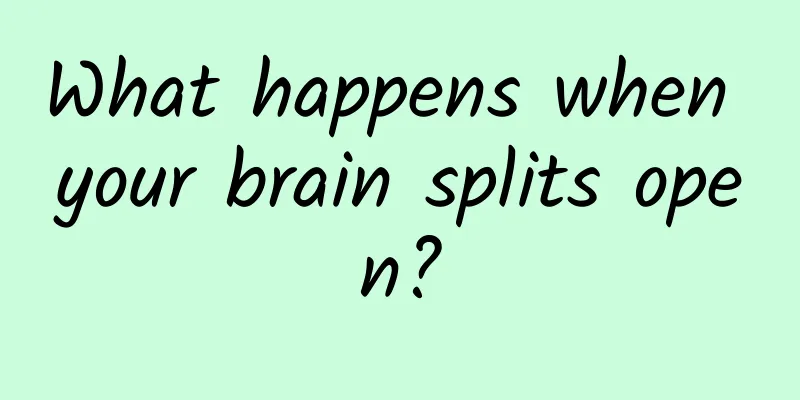
|
Where does consciousness exist? This is a question that has troubled mankind for thousands of years. In ancient times, our ancestors believed that consciousness existed in the heart. This can be seen from the ancient poems we have learned, such as Li Bai's "I send my sorrowful heart to the bright moon, and follow you to the west of Yelang". The place where sorrow is located is the heart and not somewhere else. However, with the development of science, especially anatomy, people found that the heart seems to be just a muscle that pumps blood, and our consciousness should be stored in our brain. However, because the brain is too complex, anatomy is somewhat helpless in studying the brain. It was not until the maturity of modern electroencephalography and brain surgery that brain science began to develop rapidly, and we gradually unveiled the mystery of the brain. Part 1 Brain is not the same as brain Brain (Source: Wikipedia) The brain is the central organ of the human nervous system and together with the spinal cord constitutes the human central nervous system. The brain consists of three parts: the cerebrum, cerebellum and brainstem: The cerebrum is the largest part of the human brain and the source of our consciousness; the cerebellum affects the initiation, planning and coordination of movement, and mainly plays a role in maintaining body balance; and the brainstem is the center for controlling various life activities, such as maintaining heartbeat and breathing. These activities are all maintained autonomously by the brainstem, so we still remember breathing or heartbeat when we are in a coma or asleep. Because of this, people cannot hold their breath to death, because when we hold our breath and enter a coma, the brainstem will automatically take over the control of breathing and let us resume breathing. Although the cerebellum and brainstem are even more important to basic life activities than the brain, for example, the brain of a vegetative patient basically stops functioning, but the brainstem alone can still maintain basic vital signs. Once the brainstem stops functioning, the patient will be declared brain dead, that is, medically dead. However, the generation of our consciousness is only related to the brain. Different areas of the brain control our personality, emotions, memory, limb movements, etc. The structure of the brain (Source: Baidu Encyclopedia) How did these conclusions come about? Let me introduce two "dark histories" of brain science and medical surgery to help you understand the functions and wonders of the brain. Part 2 Cerebral cortex: the material basis of consciousness The cerebral cortex, as the name implies, is the gray matter on the surface of the brain. We have all heard a saying: the more grooves on the surface of the brain, the smarter the person is. This saying has a certain scientific reason. The cerebral cortex is the organ of human thinking and the material basis of higher neural activity. The surface of the brain is uneven, which is to increase the area of the cerebral cortex. The larger the area of the cerebral cortex, the smarter the person is. Structurally, the cerebral cortex is divided into two hemispheres, with brain regions such as the frontal lobe and parietal lobe. Different brain regions play different roles. For example, the occipital lobe is responsible for receiving visual information, the parietal lobe processes motor commands and body perception, and auditory information is processed by the temporal lobe. 1. The “black magic” of brain surgery: lobotomy The frontal lobe is the most advanced part of the brain and will not mature until the age of 25. It includes the primary motor area, the premotor area and the prefrontal lobe. The frontal lobe is located in front of the central sulcus, which is a piece of cerebral cortex at the back of our forehead. It is responsible for thinking, calculation, individual emotions, and making activities subject to firm intentions and motivations. Brain divisions (Source: Sebastian023, CC BY-SA 3.0, https://commons.wikimedia.org/w/index.php?curid=21020857) Based on the important functions of the frontal lobe, it is considered to be the basis of human higher cognitive functions. But in order to realize this, we paid a heavy price. In 1935, in order to treat mental patients, Monis injected alcohol into the frontal lobe of the patient to kill nerve cells, thereby cutting off the connection between the frontal lobe and other brain areas. After the operation, the patient basically had no previous madness, agitation, depression and other behaviors, and did not leave any serious sequelae. After Monis announced this operation, many doctors also tried this operation with gratifying results. Therefore, Monis hastily concluded: "Frontal lobe resection is a simple and safe operation, and it is likely to be a surgical procedure that can effectively treat mental disorders." Mosley also won the 1949 Nobel Prize in Physiology or Medicine for this. But the nightmare began. In 1945, Dr. Freeman invented a simple and fast frontal lobe removal method called "ice pick therapy", which is to use a small hammer to pierce the ice pick from the eye socket into the brain, and then stir the ice pick to cut off the connection between the frontal lobe and other parts. The advantage or disadvantage of this method is that the operation is extremely simple, and even does not require good disinfection, and can be performed in a small clinic. The simplicity of the operation and the low technical difficulty have led to its abuse. People use it not only to "treat" serious mental patients, but also to "treat" all behavioral "diseases". In Japan, ice picks are even inserted into the brains of children simply because they are naughty or have poor grades. Ice cone therapy (Source: Baidu Encyclopedia) The sequelae of frontal lobotomy began to be widely reported in the 1950s. Although the mental symptoms of patients who underwent frontal lobotomy were alleviated, their higher-level thinking activities were destroyed. They looked dull and at the mercy of others, like zombies. From the 1950s to the 1970s, as the function of the frontal lobe in human higher-level cognitive abilities was discovered, lobotomy was phased out, and brain science finally turned over the darkest page in history. 2. The left-right game: the "split-brain" experiment The brain has two hemispheres, which are connected by a structure called the corpus callosum. If the corpus callosum is cut off, the connection between the left and right brains will be cut off, and this is a "split-brain person". Corpus callosotomy is used to treat patients with severe epilepsy. We know that epilepsy is an abnormal discharge in the brain. Cutting the corpus callosum can prevent the current from spreading between the two hemispheres of the brain, reduce the frequency of epileptic seizures and relieve the symptoms of seizures. A person whose left and right brains are completely blocked from communicating is undoubtedly an excellent experimental subject for brain scientists to study brain function and the generation of consciousness. Starting in 1962, doctors Sperry and Gazzaniga conducted the famous split-brain experiment on four epileptic patients whose corpus callosum was cut off through surgery. The experiment was mainly conducted in three aspects: vision, touch and hearing. The right brain can only focus on the visual field to the left of the fixation point, while the left brain can focus on the field of vision. The experimental team used this to design a visual experiment. Optic nerve signal transmission pathway (Source: https://ignostudies.hypotheses.org/5280) In the experiment, the experimenters flashed the word "FACE" quickly in the subjects' right visual field, and they could accurately say the word they saw; however, when the word flashed quickly in the subjects' left visual field, they said they saw nothing, but when they were asked to draw what they saw, they drew a face. This experiment shows three important messages: First, both the left and right hemispheres of the brain can recognize images and text information. This is easy to understand. In the experiment, both the left and right hemispheres responded to the word "FACE" we gave them. Second, the language center is located in the left brain. Because when we say "FACE" and project it to one side of the screen, according to the above picture, the visual information of "FACE" is transmitted to the opposite brain. However, because the corpus callosum is cut off at this time, the left and right brains lose contact, and the information will remain in the current brain. This brain can only use its own functions and cannot borrow the functions of the other half of the brain. So when the word is projected on the right side of the screen, the subject can say the noun; and when it is projected on the left side of the screen, the subject can only say "I saw nothing". This phenomenon shows that only the left brain has a language center. Third, the right brain can express itself through actions. In the experiment, the right brain was able to control the left hand to write the word "FACE", which shows that there is a motor center in the right brain, which can express itself by controlling the behavior of the limbs. Experiments on touch and hearing also prove these three points. For example, in the tactile experiment, when the right hand touches the object, the subject can say what he has received. When the left hand touches the object, the subject will say that he has received nothing, but can write the object he has received with his left hand. In the auditory experiment, there are the same results, and both the right and left hands can respond to sound stimulation. Subsequent experiments have also found that the right brain can express emotions, which shows that the right brain also has advanced thinking functions. So do the left and right brains have their own specialties, or are they essentially the same? The answer is the former. Through a drawing experiment in which subjects drew three-dimensional figures with their left and right hands respectively, the study found that the right hemisphere of the brain has a stronger spatial processing ability. In visual tasks involving spatial relationships and shapes, as you can see in the figure below, the left hand performs better at copying three-dimensional pictures. The results of the subjects' imitation drawings (the left, middle and right columns are the original picture, left-hand drawing and right-hand drawing respectively) (Source: Wikipedia) The block experiment also illustrates this point: the subject's left hand can put the blocks into the required shape very well, but the right hand can't do it well no matter what. When the right hand is clumsily placing the blocks, the left hand can't help but come up to "help". These experiments have shown that the two separated brain hemispheres have their own independent consciousness areas, and each half of the brain has independent advanced psychological functions. However, the two hemispheres are not equivalent, and each has its own strengths. Part 3 Brain Science Perspectives: A human brain with a USB port? Brain science is still developing rapidly today and is turning scenes that can only be seen in science fiction movies into reality. Brain-computer interface, maybe you have heard of this term. Through brain-computer interface technology, we can directly input and output information in the brain. How sci-fi is this technology? It allows us to experience "real" 3D movies while lying in bed, and we can project the images in our brain directly onto the screen... These seemingly unimaginative technologies may appear in the near future. In fact, Facebook is working with a team from the University of California, San Francisco, to develop a new non-invasive brain-computer interface device, and has achieved promising results. This device uses infrared light to receive brain signals from the outside and can directly read the words the user is thinking. Through further research and improvement, this technology will help those who cannot speak or have lost some of their language ability to communicate better with others in the future. In addition to these, brain science and computer, artificial intelligence and other fields are also promoting each other. Artificial brain, strong artificial intelligence... More and more technologies are being invented, more and more ideas are being proposed, and more science fiction is becoming reality. In the exploration of the brain, we are still on the road. Produced by: Science Popularization China Produced by: Zhiyao Producer: Computer Network Information Center, Chinese Academy of Sciences (The images with source indicated in this article have been authorized) The article only represents the author's views and does not represent the position of China Science Expo This article was first published in China Science Expo (kepubolan) Please indicate the source of the public account when reprinting China Science Expo Please indicate the source of the reprint. Reprinting without authorization is prohibited. For reprint authorization, cooperation, and submission matters, please contact [email protected] |
>>: Those young people who stay up late are worse than octopuses
Recommend
Analysis of Douyin operations of 24 brands including NetEase, Xiaomi, Alipay and Haidilao
You missed the bonus of Weibo big V in 2009, and ...
PS4 "Uncharted 4: A Thief's End": 1080P ultra-high-quality graphics make Drake's life a glorious end
May 10th is a day worthy of praise from many play...
Latest! The list of prohibited and restricted items for taking trains is here
The Year of the Rabbit Spring Festival holiday is...
How to solve the problem that the click price of Baidu bidding keywords is higher than the account bid?
For SEM bidders who have just entered the industr...
Chery Shuxiangjia VS Leapmotor C11: Traditional car companies and new forces, which electric SUV is more professional?
The competition between traditional car companies...
How to plan physical store activities? Just read this one
How should physical stores organize activities to...
A few "eggs" actually facilitated the "return to one's roots" across billions of years?
Recently, "National Science Review" pub...
Want to be an entrepreneur? Do you need "business skills" or "entrepreneurial thinking"?
[[157019]] In a recent blog post about entreprene...
Number game: If you fold a piece of paper 110 times, can the universe fit in it?
This is a question that is often seen on the Inte...
Amazon advertising, Amazon advertising placement
In the process of "pushing rankings" , ...
Why do you always feel sleep paralysis? It’s not the ghosts that are causing trouble, it may be that your brain wakes up too quickly!
Have you ever had this experience: after waking u...
Why did the great "BT download" technology fail?
Last April, Bob Delamar and Jeremy Johnson became ...
Introduction and Use of Cosmetics
Introduction to cosmetics and their uses: Cosmeti...
How much does it cost to develop a mini program in Guangzhou?
In an era when smartphone use has become a daily ...
Family, you must try baked apples in winter!
Who invented this way of eating... It's so de...
